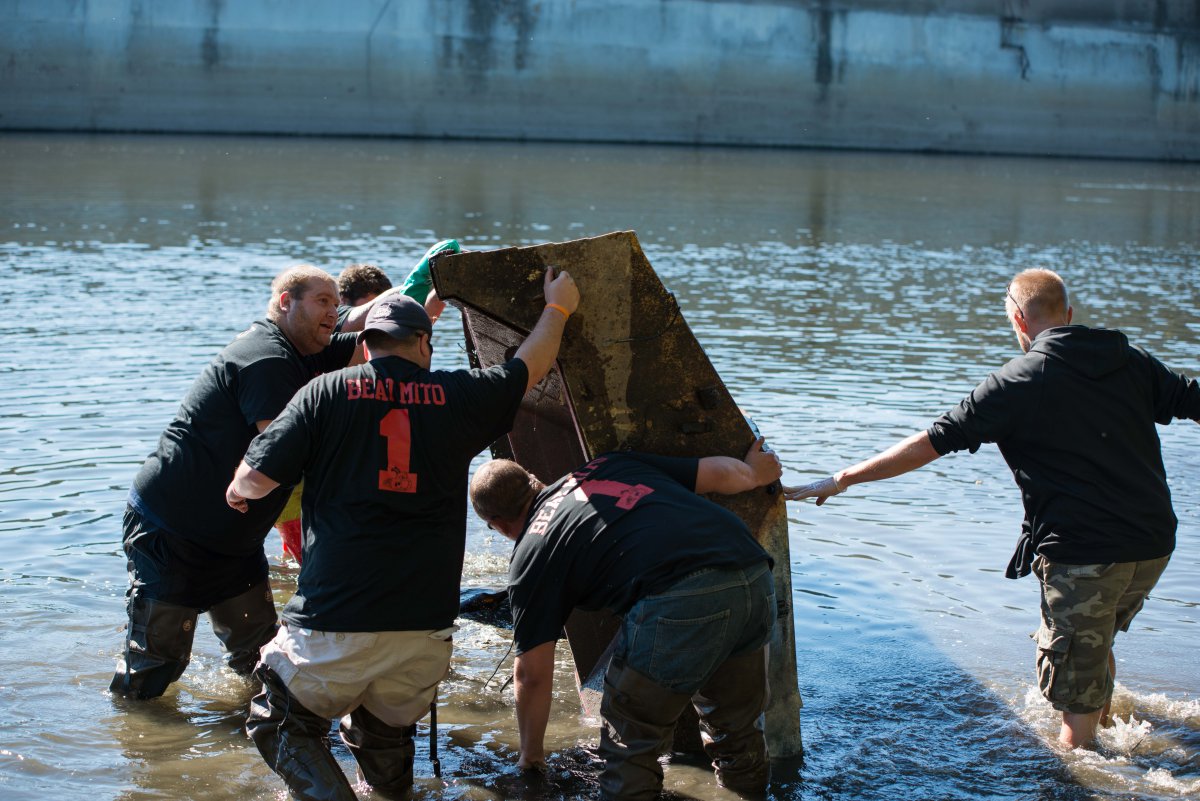About 900 west Michigan residents combed around 30 miles of the Grand River and its tributaries’s banks last Saturday morning for refuse littered along them, according to the Mayors’ Grand River Cleanup website.
As was soon apparent, “refuse” can be a fairly broad category: volunteers encountered everything from human waste, in the form of soiled diapers, to electronic debris, to all manner of paper and plastic detritus along the banks, in the river and suspended on trees and fences.
Donning green shirts and rubber gloves, teams of participants were sent off to different sections of the river and its tributaries to collect garbage as well as recycling along the banks.
This year marks the event’s 10th anniversary, and its record number of volunteers was a testament to its ongoing success as an annual community project.
Grand Rapids’ Mayor Heartwell, alongside Walker’s Mayor Holt, Wyoming’s Mayor Poll and Grandville’s Mayor Buck hosted the event, complete with complimentary breakfast, lunch and t-shirts, on the bank of the Grand River in Sixth Street Park.
Last year’s cleanup removed approximately 20,000 pounds of trash from the Grand River area, bringing the event’s cumulative total to 110,000 pounds.
For all the garbage that can be picked up, there remain the pollutants that can’t. Calvin’s Plaster Creek Stewards list E. Coli, sediment, toxic substances, fertilizers and thermal pollution as top contaminants to the watershed.
E. Coli and fertilizers originate from rural and urban areas; both livestock waste and leaky sewage pipes contribute to the pervasive bacteria presence, while fertilizer enters the creek as runoff from farms and green spaces within the city. Sediment comes from the creek itself — being washed into the water from the bank when flooding erodes the land around the watershed’s streams, creeks and rivers.
Urban runoff is a major contributor of toxic substances because salts, pesticides and other contaminants enter the water from street drains. Thermal pollution stems from the same source: paved surfaces feeding water into the creek influences its temperature, causing changes to the ecosystem.
Student volunteers expressed feeling simultaneously pleased to be able to help, and dismayed that so much help was necessary: the amount of garbage in the watershed can be discouraging to witness first-hand. But observing the watershed’s predicament personally is precisely what the event aims to allow — it isn’t just about the cleanup, but about the knowledge of its necessity.
A major goal and accomplishment of the Mayors’ Annual Grand River Cleanup is to raise the awareness of participants and their networks of threats to the watershed and of ways to protect fresh water reserves.
For those who learn best by doing, the cleanup is an event that incorporates themes of environmental management with an annual hands-on experience in the watershed itself, plus the bonus of free food and t-shirts.









